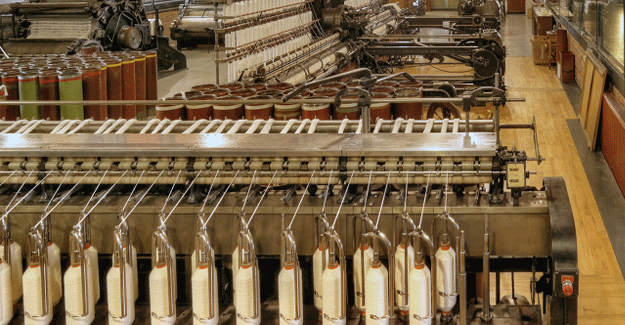Albeit A Flip Side, Brexit Could Present A Sea of Opportunities To The UK Textile Industry
Albeit A Flip Side, Brexit Could Present A Sea of Opportunities To The UK Textile Industry

According to a report that appeared in the latest edition of Global Apparel Markets, Brexit could be a sort of blessing in disguise for British textile industry. In other words the UK textile and garment industry could benefit from exiting the European Union.
The exit of UK from the European Union has resulted in a depreciation of the value of the sterling. This in turn has rendered UK’s textile and garment exports much more competitive for the export market. In wake of this situation, textile retailers from UK are eager to source more of their raw material requirements from the local markets. Another factor that has led to this change in sourcing pattern is that with the fall in the value of sterling imports have turned more expensive.
Augmenting this trend is also the fact that several overseas suppliers to the UK have switched loyalties of their market focus to other countries as they find the UK market relatively less profitable.
The above trends are expected to remain in place beyond the final date of UK’s switch from the EU that is slated for March 29, 2019. The accentuating factor for the trend is the depreciated value of the sterling. The trend is more encouraging for the domestic markets as UK has not signed any free trade agreements with the EU. This will imply that the EU countries will not be able to dump their goods in the UK market at cheaper prices. Customs duties would pose a stiff barrier and UK’s domestic markets will be subject to less competition from imports.
The bonus in terms of opportunities is that as a member of the EU, UK was constrained from negotiating its own free trade deals with other countries. Now that this constraint is removed, UK is free to chase bright prospects for access to markets like China, Japan and USA. At present the UK manufactured goods that reach the shores of these countries are in the high cost zone.
The stakes here are high in terms of opportunities. Take for instance a free trade pact between the US and the UK. This could result in approximately a 30 percent hike in UK’s exports to the USA over a tenure of five years. In addition, it would afford the US consumers premium goods at a reasonable cost. The cost margin would be approximately lower by 15 to 25 percent.
The limiting factor that comes in the way of this sea of opportunities for the UK is the absence of sufficient number of high volume manufacturing plants in the country. Besides, UK also has to anticipate a dearth of skilled operatives and talented textile hands. The jinx is that a major chunk of the seasoned textile workers hailed from the European Union nations, especially from Eastern Europe. This inflow of labor could also go for a toss as migration rules are tightened post-Brexit.
That said, as manufacturing opportunities in the UK textile and clothing industry open up, there is a chance that perceptions of employment opportunities in the industry will improve and this could help the industry to attract new, young, home grown talent.
While on the flip side, UK has also to circumvent the problems posed by the denial of its future access to a single EU market. For, as of now, UK imports clothing from the EU countries that account for 25 percent of its raw material needs besides 45 percent to its textile requirement from the EU nations. To make things worse, the imports procured by UK are used for processing and exporting finished goods to other countries. In the event that EU imposes tariff on these imported materials, it would result in a cost escalation and the prices of clothing in the UK domestic market would surge rendering it uncompetitive.



 textileexcellence
textileexcellence 







